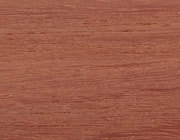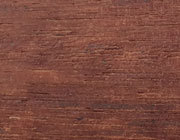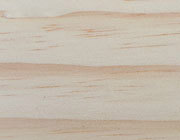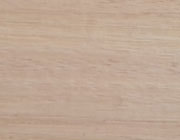Know your timber types
Whether you are a DIY enthusiast or an experienced carpenter, knowing the right timber to use for the job is an important part of any project. The beauty of natural timber is unrivalled and Feast Watson’s range of interior and exterior stains, varnishes and oils serve to enhance the already unmistakable charm of a timber finish.
Here’s a quick guide to help you select the best timber for your job.
Jarrah

Another Australian hardwood with a distinctive dark red colour. It is tough and heavy, making it an ideal timber for high polishing. It accepts most timber finishing well.
Use for- flooring, panelling, joinery, decking and furniture.
Brush Box
This Australian hardwood is a dense, pinkish grey to reddish-brown timber with a natural waxiness.
Use for- interior flooring, furniture, cladding and fences.
Cypress Pine
An Australian softwood, however, it is known to be hardy and durable. It varies in colour from pale yellow to shades of brown. It has a fine, even texture and commonly has knots. Although it tends to be brittle and prone to fine surface checking, Cypress Pine can be worked to a very high polish and takes most finishes well after de-oiling.
Use for- structures, poles, flooring, panelling and decking.
Merbau (Kwila)

This durable timber is dark reddish-brown in colour. Due to high tannin content, it may require repeat application of a cleaning product such as Feast Watson Woodclean before you coat it.
Use for- decking, fences, flooring and panelling.
Oregon
A softwood that ranges from yellow-brown to pale red-brown in colour. This timber has a high resin content that can crystalise on the surface. Any resin crystals will need to be scraped off prior to coating.
Used for- pergolas and structural framing.
Radiata Pine

A common plantation softwood that is suitable for interior use only, unless treated with preservatives (ie. Treated Pine). It is pale yellow and receives treatment well. It is ideal for staining and liming colours.
Used for- furniture, wall or ceiling lining boards, plywood, particleboard and general construction.
Spotted Gum

This Australian hardwood is very dense and oily. It can be a range of brown colouring, coming in both pale and dark varieties. Because of its oil content, Spotted Gum should be treated with Feast Watson Woodclean. Look out for Spotted Gum in timber decking. It may be sold as ‘mixed hardwood’.
Use for- flooring, cladding, decking, fencing, landscaping, retaining walls and as structural timber.
Teak
A golden brown Asian hardwood with a waxy or greasy feel.
Use for- furniture, veneers and ship’s decking.
Treated Pine
Treated Pine is Radiata Pine that has been pressure treated with preservatives, making it more resistant to decay, termites and fungi. It is yellow in colour and must be completely dry before staining due to the treatment it receives.
Use for- decks, pergolas and fences.
Victorian Ash (Tasmanian Oak)

A blend of Australian hardwoods with colours varying from pale pink to pale yellow.
Use for- interior applications like flooring, kitchen cupboards, wall panelling and furniture.
Western Red Cedar

This timber is easy to work with and readily accepts stains and coatings. Commonly from North America, it is a softwood that is pale to dark brown. Left uncoated the timber will weather and grey easily compared to other external timbers. If you want to slow the weathering process, prevent surface damage and/or intend to coat this timber later, it is recommended to coat the timber upon delivery.
Use for- window frames, garage doors and cladding.